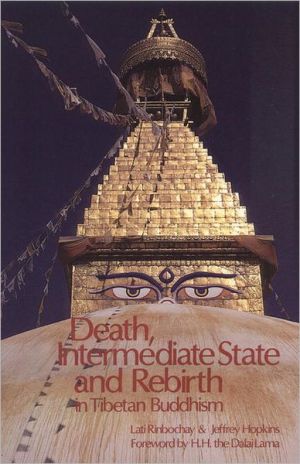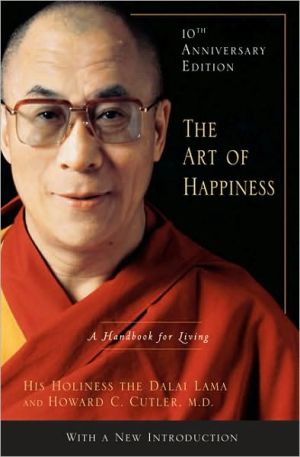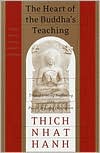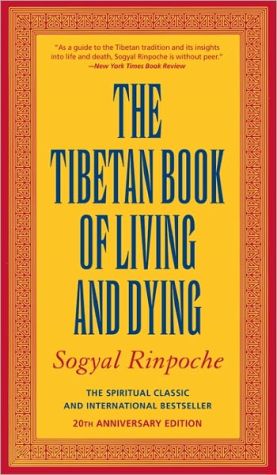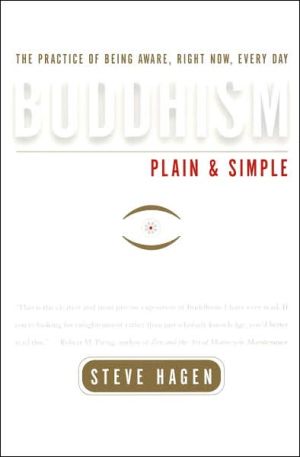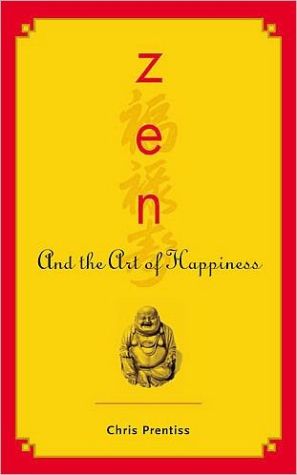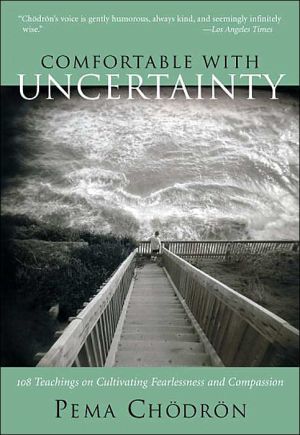Death, Intermediate State and Rebirth: In Tibetan Buddhism
This fascinating book unfolds in detail the complex Tibetan Buddhist system of subtle physiology, providing a complete exposition of the channels, drops, and winds which serve as foundations for consciousness. Highest Yoga Tantra simulates processes of death, intermediate states, and rebirth, so it is important for the practitioner to know how humans die—the stages of death, and the physiological reasons behind them.
Search in google:
Detailed exposition of how people die, the stages of death, and the subtle physiological processes attending death and deep meditation.
\ Chapter One\ \ \ The Stages of Death\ \ \ The process of death is determined by the type of body that onehas; therefore, the text begins with a brief recounting of howhumans came to be born from wombs and possess a coarse bodycomposed of flesh, blood and so forth.\ \ \ During the first aeon [after formation of this world system],the humans of this world had seven features — spontaneousbirth, an immeasurable life-span, all sense faculties, a bodypervaded by its own light, adornment with similitudes of themajor and minor marks [of a Buddha], sustenance by the foodof joy without eating coarse food, and magically flying in thesky. However, due to activation of predispositions establishedby attachment to food [in previous lives], they ate coarsesustenance.\ Then, when the unrefined part of the food turned intofaeces and urine, the male and female organs protruded asopenings for excretion. Two who possessed predispositionsestablished by copulation in former [lives] became attached toeach other and, in dependence on their lying together, asentient being formed in the womb. Through these steps,birth from a womb came to be.\ Womb-born humans of this world are said to have the sixconstituents — earth, water, fire, wind, channels and drops.\ \ \ The earth constituent refers to the hard elements of the body, suchas bone, skin, nails and hair. The water constituent is comprisedof the fluids in the body, such as urine, bile and blood. The fireconstituent is the warmth that maintains the body. That of windrefers to currents of air or energy that perform the physical functionssuch asswallowing and serve as the `mounts' of consciousnesses.The channels are the veins, arteries, ducts, nerve pathways and soforth, through which flow blood, lymph, bile, wind and so on. Thedrops are essential fluids that course through the channels.\ \ \ Or [according to another interpretation] the six constituentsare bone, marrow and regenerative fluid obtained from thefather, and flesh, skin and blood obtained from the mother.\ \ \ The regenerative fluid of the father is the main cause of the threeobtained from him, and that of the mother is the main cause of thethree obtained from her. Both male and female act as causes of all six.\ \ \ Whoever is a person definite to become enlightened in oneshort lifetime of this degenerate era, through practising fromthe beginning the path of Highest Yoga Mantra, is necessarilysuch a womb-born human of this world having the six constituents.\ \ \ A special feature of Highest Yoga Mantra that distinguishes it fromthe three lower tantras — Action, Performance and Yoga — and fromthe Sutra Vehicle is that, through practising it, highly qualifiedpersons can attain Buddhahood in one lifetime. This means thatthey pass over the five paths — accumulation, preparation, seeing,meditation and no more learning — in one lifetime without havingto practise for innumerable aeons as is required in the other systems.\ In the other systems, a great length of time is spent in amassingthe meritorious power needed to empower the wisdom consciousnessthat realizes emptiness so that it can overcome the obstructionsto omniscience. However, in Highest Yoga Mantra, special practicesare used to enhance the wisdom consciousness through utilizingsubtle minds in the realization of emptiness and in subsequentlyrising in an illusory body. These techniques depend upon thechannels, winds and drops within the human body.\ \ \ The bodies of humans of this world have seventy-two thousandchannels as well as the right, left, and central channels.\ \ \ The coarse body is a composite of the elements and evolutes of theelements. The subtle body is comprised of the channels, windsand white and red drops. The very subtle body is the wind thatserves as the mount of the mind of clear light, as well as the windthat abides in the indestructible drop at the heart.\ With respect to the channels of the subtle body, the centralchannel ranges upward from the heart to the crown of the head,then down to the point between the eyebrows. It moves downwardfrom the heart to the middle of the head of the phallus or thevagina. To the right and left of the central channel are two othersthat constrict it not only through squeezing it between them butalso through encircling it at each channel-centre — three times eachat the heart and fewer at the others. Due to this tight constriction,during ordinary existence the winds do not move upward ordownward inside the central channel except at death.\ \ \ At the time of death all the winds in the seventy-two thousandchannels gather in the right and left channels. Then the windsin these two dissolve into the central channel. The winds in theupper and lower parts of the central channel finally dissolveinto the indestructible life-bearing wind at the heart.\ \ \ At the heart is a channel-wheel, with eight petals or spokes. It iscalled the `wheel of phenomena' because the indestructible drop,which is the basis of the very subtle wind and mind that are theroot of phenomena, abides at the heart. At the throat is the wheel ofenjoyment; this has sixteen petals and is so called because the throatis the place of enjoying the six tastes — sweet, sour, bitter, astringent,pungent and salty. At the crown of the head is the wheel of greatbliss, which has thirty-two petals and is so called because the white`mind of enlightenment' (regenerative fluid), which is the basis ofbliss, dwells at the top of the head. At the navel is the wheel ofemanation, which has sixty-four petals and is so called because the`fierce one' (gtum mo), which is the emanator of great bliss, abides atthe navel. At the secret region, or base of the spine, is the wheel ofsustaining bliss, which has thirty-two petals and is so called becausethe innate bliss is mainly sustained from the secret region.\ \ \ The white and red constituents exist in the manner of a closed[round] case [with a white drop on top and a red one on thebottom] inside the central channel at the channel-wheel of theheart. In the centre of this closed case is the one entity of thevery subtle wind and mind.\ \ \ The five sense consciousnesses — eye, ear, nose, tongue and body — arecoarse minds. The conceptual mental consciousness is the subtlemind. The mind that dwells in the indestructible drop is the verysubtle mind.\ The very subtle wind is the indestructible life-bearing windinto which the final dissolution [in the process of death] occurs.\ [Death occurs in this way] because, except for this verysubtle wind, if the slightest wind that acts as a basis of consciousnessdwells in any part of the body, death is not possible.\ \ \ The way that wind acts as the basis or mount of consciousness isexemplified by a horse's serving as a mount for a rider.\ \ \ Stages of dissolution\ Humans must die by way of the dissolution of the twenty-fivegross objects — five aggregates, four constituents, six sources,five objects and five basic wisdoms.\ \ \ The process of death occurs in eight stages that involve the dissolutionof twenty-five factors (see charts 6 and 7). Twenty-twodissolve over the first four stages, with the remainder — the aggregateof consciousness, the mental sense and the basic wisdomrealizing the nature of phenomena — dissolving over the last four.\ \ \ FIRST DISSOLUTION\ Initially, the five phenomena on the level of the aggregate offorms dissolve simultaneously; they are the aggregate of forms,the basic mirror-like wisdom, the earth constituent, the eyesense and the visible forms [colours and shapes] included withinone's own continuum.\ As the external sign of the dissolution of the form aggregate,one's limbs become smaller than before, and one's body becomesweak and powerless.\ \ \ This diminishment in size and strength is a pronounced form ofthat usually associated with old age.\ \ \ The basic mirror-like wisdom is explained to be an [ordinary]consciousness to which many objects appear simultaneouslyand clearly, just as reflections appear in a mirror. As an externalsign of its dissolution, one's sight becomes unclear and dark.\ As an external sign of the dissolution of the earth constituent,the body becomes very thin, the limbs loose, and one has thesense that the body is sinking under the earth.\ \ \ The impression of sinking is such that one calls out, `Hold me up!'\ \ \ As an external sign of the dissolution of the eye sense power,one cannot open or close the eyes.\ As an external sign of the dissolution of the visible formsincluded within one's own continuum, the lustre of one's bodydiminishes and one's strength is consumed.\ The internal sign of the dissolution of these five is the arisingof a bluish appearance called `like a mirage'. It is like anappearance of water when the light of the sun strikes a desertin the summer.\ \ \ The appearance is also compared to a mass of smoke, but mostfrequently to a mirage.\ \ \ SECOND DISSOLUTION\ After that, the five phenomena on the level of the aggregateof feelings dissolve simultaneously. When the aggregate offeelings dissolves, the external sign is that the body consciousnesscan no longer experience the pleasure, pain and neutralfeelings which accompany the sense consciousnesses.\ The basic wisdom of equality is explained to be an [ordinary]consciousness that is mindful of pleasure, pain and neutralfeelings as of one type, that is to say, as feeling.\ \ \ It is also described as a consciousness that is mindful of manysynonyms as having one meaning.\ \ \ As an external sign of its dissolution, one is no longer mindfulof the pleasure, pain and neutral feelings that accompany themental consciousness.\ As an external sign of the dissolution of the water constituent,one's saliva, sweat, urine, blood and regenerative fluid drygreatly.\ \ \ The mouth, nose, tongue and throat dry, and scum forms on theteeth.\ \ \ As an external sign of the dissolution of the ear sense power,one can no longer hear external or internal sounds.\ As an external sign of the dissolution of the sounds includedwithin one's own continuum, the ur sound inside the ears nolonger arises.\ The internal sign of the dissolution of these five is the dawningof an appearance called `like smoke', which is like bluepuffs of smoke. It is similar to smoke billowing from a chimneyin the midst of a mass of smoke.\ \ \ THIRD DISSOLUTION\ After that, the five phenomena on the level of the aggregate ofdiscriminations dissolve simultaneously. As an external sign ofthe dissolution of the aggregate of discriminations, one is nolonger mindful of the affairs of close persons such as one'sparents.\ The basic wisdom of analysis is explained to be an [ordinary]consciousness that is mindful of the individual names [purposes,and so forth] of close persons. As a sign of its dissolution, onecan no longer remember the names even of one's parents.\ As an external sign of the dissolution of the fire constituent,the warmth of the body diminishes, whereupon the capacityto digest food and drink is lost.\ As an external sign of the dissolution of the nose sensepower, the inhalation of wind [air] through the nose is weakwhereas the exhalation is strong and lengthy, and the breathsare as if piled one on top of the other.\ As an external sign of the dissolution of the odours includedwithin one's own continuum, one cannot smell any fragrantor unfragrant odours.\ The internal sign of the dissolution of these five is thearising of an appearance called `like fireflies'. It is like burningred sparks seen within puffs of smoke rising from a chimney,or like red sparks on the soot on the bottom of a pan used forparching grain.\ \ \ FOURTH DISSOLUTION\ After that, the five phenomena on the level of the aggregateof compositional factors dissolve simultaneously. The externalsign of the dissolution of this aggregate is that one cannot performphysical actions such as moving about.\ The basic wisdom of achieving activities is explained to bea consciousness that is mindful of external worldly activities,purposes and so forth [of this and future lives, as well as howto achieve them]. As an external sign of its dissolution, oneis no longer mindful of these.\ As an external sign of the dissolution of the wind constituent,the ten winds — the [gross] life-bearing wind and so forth — shiftfrom their own abodes to the heart, and the breath ceasesto move in and out.\ As an external sign of the dissolution of the tongue sensepower, the tongue becomes thick and short, and its root turnsblue.\ As an external sign of the dissolution of the tastes includedwithin one's own continuum, one can no longer experience thesix tastes [sweet, sour, bitter, astringent, pungent and salty].\ Since at this point the body sense power and touches mustalso dissolve, as an external sign of their dissolution one can nolonger experience any smoothness or roughness.\ The internal sign of the dissolution of these seven is thearising of an appearance called `like a burning butter-lamp'. Itis like the sputtering point of a butter-lamp's flame when it isabout to go out.\ The meaning of `dissolution'. With respect to how the formerelements dissolve into the latter, the capacity of [the windassociated with] a former element [in the list of earth, water,fire and wind] to act as a basis of consciousness is withdrawn,and the capacity of a latter one to do so becomes more manifest.This is called the dissolution of a former element into alatter one, but is not a case of one element's becoming of thenature of another.\ That earth dissolves into water means that the capacity ofthe earth-wind to act as a basis of consciousness degenerates,whereupon the capacity of the water-wind to act as a basis ofconsciousness becomes more manifest. Thus, since this is likea transference of the capacity of the former to the latter, it issaid that earth dissolves into water, but it is not that ordinaryearth dissolves into ordinary water. This applies to the otherdissolutions as well.\ \ \ FIFTH DISSOLUTION\ After the four elements dissolve, the five phenomena on thelevel of the aggregate of consciousness must dawn in stages.These five are the mind of the eighty indicative conceptions,the mind of radiant white appearance, the mind of radiant redincrease, the mind of radiant black near-attainment, and themind of the clear light of death.\ \ \ The eighty conceptions are divided into three groups — thirty-threeindicative of the mind of white appearance, forty indicative of themind of red increase, and seven indicative of the mind of blacknear-attainment. The first group of conceptions involves a coarsemovement of the winds that serve as their mounts to the objects,and thus they serve to indicate or illustrate — for those who havenot manifestly experienced the mind of white appearance — that thewind serving as its mount has a somewhat coarse movement comparedto the minds of red increase and black near-attainment. Thisinference about the mind of white appearance can be drawn becausethe first group of conceptions is an imprint or effect of the mind ofwhite appearance when proceeding in reverse order from thesubtler to the grosser states. The thirty-three are:\ \ \ 1 Great lack of desire: a mind not desiring an object\ 2 Middling lack of desire\ 3 Small lack of desire\ 4 Mental going and coming: a mind going to external objects and coming to internal objects\ 5 Great sorrow: the mental pangs upon separation from a pleasant object\ 6 Middling sorrow\ 7 Small sorrow\ 8 Peace: a mind abiding peacefully\ 9 Conceptuality: an excited mind due to the brightness of the object\ 10 Great fear: fright generated upon meeting with an unpleasant object\ 11 Middling fear\ 12 Small fear\ 13 Great attachment: adhering to a pleasant object\ 14 Middling attachment\ 15 Small attachment\ 16 Grasping: a mind thoroughly holding to objects of the desire realm\ 17 Non-virtue or non-knowledge: doubt with respect to virtuous activities\ 18 Hunger: desiring food\ 19 Thirst: desiring drink\ 20 Great feeling: feelings of pleasure, pain and neutrality\ 21 Middling feeling\ 22 Small feeling\ 23 Conception of a knower\ 24 Conception of knowing\ 25 Conception of an object known\ 26 Individual examination: a mind analysing what is suitable and unsuitable\ 27 Shame: avoiding misconduct due to one's own disapproval or religious prohibition\ 28 Compassion: wishing for separation from suffering\ 29 Mercy: a mind of thoroughly protecting an object of observation\ 30 Desire to meet with the beautiful\ 31 Qualm: a captivated mind, not abiding in certainty\ 32 Accumulation: a mind of gathering possessions\ 33 Jealousy: a mind disturbed by others' prosperity.\ \ \ The forty conceptions of the second group involve a middlingmovement of the wind that serves as their mount to the object;and thus they serve to indicate or illustrate, for those who have notexperienced it, that the wind serving as the mount of red or orangeincrease has a middling movement compared to the minds of whiteand black appearance. In other words, the mind is becoming lessdualistic as it becomes more subtle. This inference about the mindof radiant red increase can be drawn because this group of conceptionsis an imprint or effect of the mind of red increase when proceedingin reverse order to grosser states. The forty are:\ \ \ 1 Desire: attachment to an object not yet attained\ 2 Adherence: attachment to an object attained\ 3 Great joy: a joyous mind upon seeing the pleasant\ 4 Middling joy\ 5 Small joy\ 6 Rejoicing: pleasure due to having achieved a desired object\ 7 Rapture: a mind repeatedly experiencing a desired object\ 8 Amazement: contemplating an object that did not arise before\ 9 Excitement: a mind distracted through perceiving a pleasant object\ 10 Contentment: satisfaction with a pleasant object\ 11 Embracing: desiring to embrace\ 12 Kissing: desiring to kiss\ 13 Sucking: desiring to suck\ 14 Stability: a mind of unchanging continuum\ 15 Effort: a mind tending to virtue\ 16 Pride: a mind considering oneself high\ 17 Activity: a mind of completing an activity\ 18 Robbery: desiring to rob wealth\ 19 Force: desiring to conquer others' troops\ 20 Enthusiasm: a mind familiarizing with the path of virtue\ 21 Great engagement in hardship: engaging in non-virtue due to arrogance\ 22 Middling engagement in hardship\ 23 Small engagement in hardship\ 24 Vehemence: desiring to debate with the excellent for no reason\ 25 Flirtation: desiring to play upon seeing the attractive\ 26 Angry disposition: a mind of resentment\ 27 Virtue: wishing to make effort at virtuous actions\ 28 Clear speech and truth: wishing to speak so that others can understandand without changing one's discrimination of the fact\ 29 Untruth: wishing to speak having changed one's discrimination of the fact\ 30 Definiteness: very steady intent\ 31 Non-assumption: a mind not desiring to hold an object\ 32 Donor: wishing to give away possessions\ 33 Exhortation: wishing to exhort the lazy to religious practice\ 34 Heroism: wishing to overcome enemies such as the afflictions\ 35 Non-shame: engaging in non-virtue without avoiding misconduct due to one's own disapproval or religious prohibition\ 36 Deceit: deceiving others through hypocrisy\ 37 Tightness: sharp conscientiousness\ 38 Viciousness: a mind used to a bad view\ 39 Non-gentleness: wishing to injure others\ 40 Crookedness: dishonesty.\ \ \ The seven conceptions of the third group involve a weak movementof the wind that serves as their mount to the object; thus theyserve to indicate or illustrate the same with regard to the mind ofblack near-attainment for those who have not experienced it. Thisis because this group of conceptions is an imprint or effect of themind of black near-attainment when proceeding in reverse order togrosser states. The seven are:\ 1 Forgetfulness: degenerated mindfulness\ 2 Mistake: such as apprehending water in a mirage\ 3 Non-speaking: not wishing to speak\ 4 Depression: a mind of annoyance\ 5 Laziness: non-enthusiasm for virtue\ 6 Doubt\ 7 Middling desire: a mind of equal desire and hatred.\ \ \ The mind of the eighty indicative conceptions and the windwhich serves as its mount must dissolve prior to the radiantwhite appearance because its mode of apprehension and that ofthe mind of appearance are discordant. Also, since there is agreat difference of coarseness and subtlety between these two,coarse minds such as those of the eighty conceptions cannotexist at the time of [the white] appearance.\ When the eighty indicative conceptions as well as the windthat serves as their mount begin to dissolve into the radiantwhite appearance, an appearance like a burning butter-lamparises. The sign of the mind of appearance itself — when thoseeighty indicative conceptions have dissolved into it — is thedawning of extreme clarity and vacuity as well as of light witha white aspect like a night sky pervaded by moonlight in theautumn when the sky is free of defilement.\ With respect to the cause of such an appearance, all the windsin the right and left channels above the heart have entered thecentral channel through its upper opening [at the top of thehead]. Through the force of this, the knot of the channels atthe top of the head is loosened, and, since the white drop obtainedfrom the father — which has the aspect of the syllableham upside-down — has the nature of water, it comes downward.When it arrives on top of the six-circled knot of theright and left channels at the heart, the radiant white appearancearises. Thus, this is not a case of an appearance of moonlightand so forth shining from the outside.\ It is called `appearance' [because an appearance like moonlightdawns] and `the empty' [because of being devoid of the eightyconceptions as well as the wind that serves as their mount].\ \ \ SIXTH DISSOLUTION\ After that, the mind of appearance as well as the wind thatserves as its mount dissolves into the mind of increase. Whenthe mind of increase dawns, a red or orange appearance, emptyand vacuous but much clearer than before, shines like anautumn sky, free of defilement and pervaded by sunlight.\ With respect to its cause, all the winds in the right and leftchannels below the heart have entered the central channelthrough its lower opening [at the base of the spine or in thesexual organ]. Through the force of this, the knot of thechannel-wheel in the jewel [sexual organ] and the knot of thechannel-wheel at the navel gradually loosen. Thereby, the reddrop that is obtained from the mother, which exists in the formof the single [vertical] line of a short a [in Sanskrit, when addedto make a long a] in the middle of the channel-wheel at thenavel, comes upward. Until it arrives below the six-circledknot of the right and left channels at the heart, a red or orangeappearance arises. Thus, this is not a case of the illuminationof sunlight and so forth shining from outside.\ (Continues...)\ \ \ Excerpted from Death, Intermediate State and Rebirth in Tibetan Buddhism by Lati Rinbochay and Jeffrey Hopkins. Copyright © 1985 by Lati Rinbochay and Jeffrey Hopkins. Excerpted by permission. All rights reserved. No part of this excerpt may be reproduced or reprinted without permission in writing from the publisher. \ \ \ \ \ THE BURNING OF LOS ANGELES\ \ \ By SAMUEL MAIO\ \ Thomas Jefferson University Press\ Copyright © 1997 Thomas Jefferson University Press.All rights reserved.\ TAILER
Foreword by His Holiness the Fourteenth Dalai Lama7 Preface13 Death, Intermediate State and Rebirth by Yang-jen-ga-way-lo-drö23 Introduction25 1 The Stages of Death29 2 The Intermediate State49 3 Taking Birth58 4 Stopping Death69 Bibliography75 Notes79 Index83
